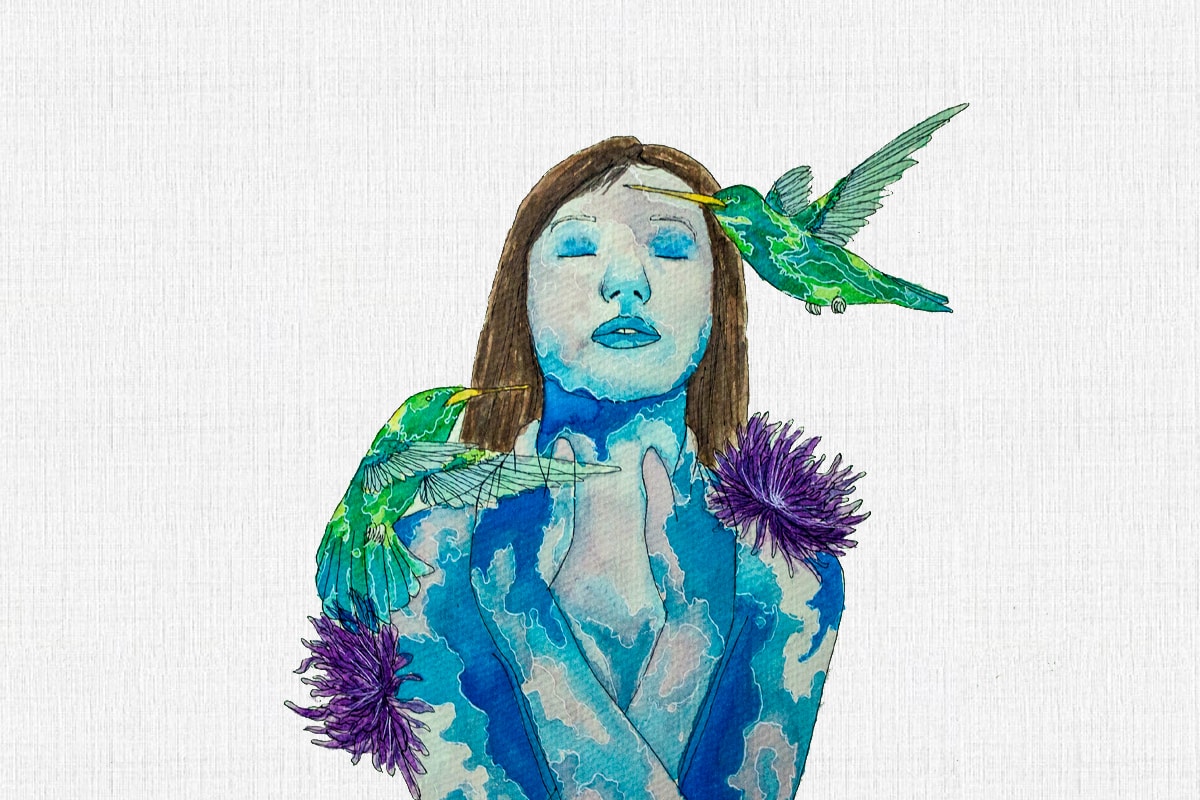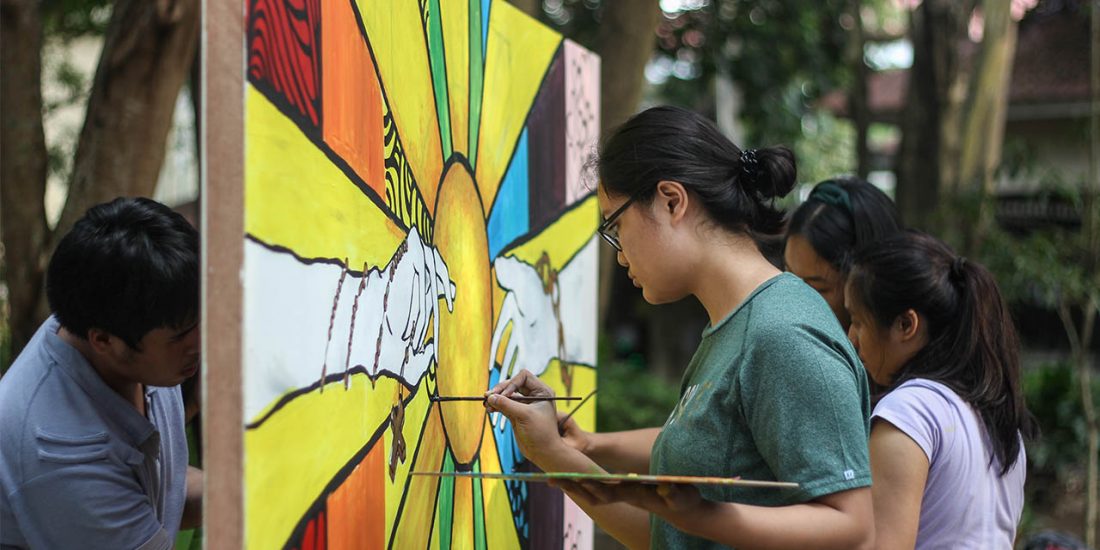On the darker hue: Facing the harsh side of art industry
Art was deemed as a luxury during the era where Artidote, Behance, and Soundcloud were strangers to everyone’s vocabulary. Back then, only the rich and royal could afford to purchase a painting, go to an orchestra, or attend plays in grandiose theaters. Now that the world has been transformed 360-degrees by technology, anyone can freely immerse themselves in art and even pursue their own creative endeavors. However, the liberty to take pleasure in art at no cost has led to a reasoning that art should always be free, exploiting the taken-for-granted artists and their masterpieces.
 Art by Marco Belarmino
Art by Marco BelarminoDonatello, Leonardo, Michelangelo, Raphael—these are not only the names of famous Teenage Mutant Ninja Turtles, but are also the names of the most prominent artists in the Renaissance period: the era of classical learning, revival of values, and flourishing advancement in innovation, ideals, and aesthetics. Artists were considered geniuses with status and prestige in society as art was a major foundation of this period, explains William Wallace in his essay The Artist as Genius. However, gaining reputation and prominence from their artistic profession was not an easy venture, as these great artists also struggled to have their art acknowledged.
But as the world changed and new ideals emerged, art slowly became standardized and so did the concept of the artist, according to William Deresiewicz in his article The Death of the Artist—and the Birth of the Creative Entrepreneur. The artists, once considered as geniuses due to their visions, nobility, and artistry, evolved—or devolved—into professionals forced to stick to the ideals of the commercial culture to satisfy the requests of clients and consumers. Because of this, most artists fix their attention in becoming versatile with different mediums and expanding their social network instead of mastering a specific medium or perfecting techniques, Deresiewicz stated.
Pursuing a creative career is never easy and as Emily Browne described in her article 10 things about being an artist that art teachers don’t tell you, this passionate pursuit is “a huge gamble” and a “make or break” endeavor. As art-related careers were always on the list of the lowest-paying jobs or worst careers, people had the misconception that aiming for a creative career path is like tackling unemployment head-on. Before even getting an art major, most aspiring young artists are discouraged by a society that insists they take on STEM (Science, Technology, Engineering, Mathematics) majors because they are “more practical” than art majors, according to Loyola University Maryland professor Joseph Ganem.
Just as in any career, looking for the perfect regular job as an artist is difficult and having self-employment as an only option leads many artists to choose freelancing and accepting commissions, according to career adviser Margaret Holbrough. Work is random and so are paychecks, leading people to conclude that being an artist is an unstable career choice. But despite the low probability of success, their burning passion cannot be frozen by ice-cold mockery or extinguished by criticisms.
 Art by Marco Belarmino
Art by Marco BelarminoArt does not create itself—there is a mind, body, and soul behind every masterpiece. Whether it is a huge mural painting, a 500-word story, or a simple logo design, an artist devotes himself or herself to create a desirable output. However, the value of these masterpieces is somehow marked down when the internet is concerned, where everything is freely downloaded with just a few clicks. In short, the art industry itself does not give the rightful recognition that every artist deserves.
Most people consider art as a hobby and paying an artist seems ridiculous. Because of this reasoning, many artists were continuously exploited for their ideas and labor, art critic and blogger Paddy Johnson stated in her article Instead of Exploiting Artists, Pay Them. Being able to do what they love is priceless, but most artists are also professionals who invest in their passions by making it their means to create a living.
As artists continue to meet stingy clients, it will be a lifelong struggle for most of them to get paid fairly. The majority of creative careers usually provide small financial stability with few—or zero—job security, pension, or benefits, according to writer Laura Barnett in her article Don’t Give up the Day Job – How Artists Make a Living. Not being able to get the rightful compensation is upsetting—especially if there’s no compensation at all. In fact, most artists, especially the amateurs, are offered commissions for exposure and experience with no payment at all, writer Scott Timberg stated on salon.com.
The notion that there is no money in art will never fade until people understand that it does not only take passion to make art. Every artist dedicates their life to hone their skills, and it takes numerous accomplishments and failures to create a masterpiece. For artists, it is not about the amount of money; for them, receiving the rightful compensation means that the value of their work—where they dedicated their heart and soul into with every brush stroke, word, or move—is being respected.
 Art by Marco Belarmino>
Art by Marco Belarmino>“All great works of art are trophies of victorious struggle,” German art critic and novelist Julius Meier-Graefe stated. Despite scornful remarks and belittlement, most artists turned this oppression into inspiration for their art. But these negative opinions will continue if no one dares to bring it to an end, and indeed no one can solve the artists’ dilemma against prejudice and inequality but the artists themselves.
One of the organizations that advocates for artists’ rights is Working Artists and the Greater Economy (WAGE), a New York-based advocacy group that demands to resolve the economic inequalities in the art industry and to value the workforce of artists by providing appropriate fees and other benefits. Through their website wageforwork.com, they persuade artists to sign up in their coalition and spread the word about the inequality artists are facing with their manifesto. WAGE believes that by having a larger coalition, they will have a “greater ability to implement change.”
Artists wrestle for their rights in the workforce and the most significant support they can get will be from the government. For Filipino artists, Senator Grace Poe-Llamanzares filed the Artist’s Welfare Protection and Information Act Of 2015 to accredit professional artists and provide them the rights and privileges that regular employees have, such as social security, housing, and medical insurance. Actor, director, and Artists Welfare Project Inc. president Fernando “Nanding” Josef hopes to have this bill approved as it will secure the future of passionate Filipino artists and help them focus in their craft, as he stated on The Philippine Star website. “With heads held up high, we, Filipino artists must say that, a nation that forgets and ignores its own artists—heroes and their contributions to our country and our people will forever be a nation without a soul and spirit, and will never, ever become a great nation,” Josef added.
Artists’ works are the fruit of their knowledge, experiences, failures, and frustrations in order to have their own identity and significance. Not getting the right compensation or not having the benefits of a regular employee is one thing, but getting underpaid means your work is being devalued. Graphic designer Kay Aranzanso stated in the Philippine Inquirer lifestyle website Preen that Filipino artists already have the talent and skill to strive for international standards. In fact, many Filipino artists are already known in global scene like contemporary painter Pacita Abad who has held exhibits in more than 200 museums and galleries, and multi-awarded film director Brillante Mendoza whose works have been screened in international film festivals such as Cannes Film Festival and Berlin Film Festival. Now, it’s just a matter of being able to make their own stand and having the recognition they deserve especially from their own country.
“Know your worth,” Aranzanso advised, reminding artists to be confident with their work and demand for a fair compensation.
***
Most of us are always fascinated by the idea of art and how it can inspire and enlighten us, whether it’s visual arts, performing arts, music, or literature. Yet, many people who appreciate art are not aware of the artist’s struggle to create a hallelujah-inducing work of art. But despite of the never-ending cycle of being deprived of the glory from their works and unfair criticism, it didn’t falter those creative minds. Though the creation of art lives on for us to adore, it does not mean we should just stare at it until artists’ creative juices was drained with no replenishment.





